Sarah L. Johnson's Blog, page 90
May 12, 2015
Art, war, and secrets: Currawong Manor by Josephine Pennicott
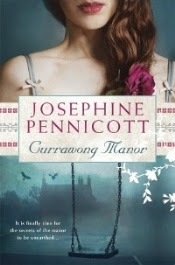 With her previous novel,
Poet’s Cottage
, Josephine Pennicott proved that edgy bohemian glamour and gothic creepiness made a great combination. Here she continues these themes but ups her game further with her riveting dual-period novel, set in Australia’s Blue Mountains in 2000 and 1945, about dreadful family secrets, the interpretations of creative works, and the lasting impact of war on artists and their art.
With her previous novel,
Poet’s Cottage
, Josephine Pennicott proved that edgy bohemian glamour and gothic creepiness made a great combination. Here she continues these themes but ups her game further with her riveting dual-period novel, set in Australia’s Blue Mountains in 2000 and 1945, about dreadful family secrets, the interpretations of creative works, and the lasting impact of war on artists and their art. The modern protagonist, photographer Elizabeth Thorrington, jumps at the chance to return to Currawong Manor, her grandparents’ remote estate, following a career scandal. In the course of preparing a coffee-table book about her grandfather, eccentric painter Rupert Partridge, and his three beautiful life-models called the “Flowers,” she hopes to learn about her family history. A wild, haunted place, with its fairytale garden, high towers, and mythological sculptures wreathed in mist, Currawong was once the scene for a trio of tragedies. “The locals have always called it the Ruins,” Elizabeth tells a friend, “not just because it’s fallen into ruins, but because it ruins lives.” Then there are the mysterious “dollmaker” and her daughter, who were allowed to remain on the property – why?
The writing is sharp throughout, with striking images of the house both in the modern segments and in its prime. The most memorable creation is Ginger Lawson, whose attitude is as fiery as her hair. A former “Flower” with lots of sex appeal even in her 70s, Ginger returns to Currawong to be depicted anew in Elizabeth’s book. Her recollections about Rupert drive the plot along.
There’s a lot of story packed into the nearly 400 pages, all perfectly paced, with secrets teased out bit by bit until the shocking denouement – which is worth staying up late to discover. Fans of Kate Morton should devour it, but Pennicott has a distinctive style all her own.
This review first appeared in the Historical Novels Review's May issue and is based on my own copy of the book. Currawong Manor was published by Macmillan Australia in 2014 in trade paperback (Au$29.99) and as an ebook ($19.99). This review is my 2nd entry for the 2015 Australian Women Writers Challenge.
And for readers unfamiliar with what a currawong is, they're birds native to Australasia, and their presence plays a role in the story.
Published on May 12, 2015 08:00
May 11, 2015
Charting the political waters of the Stuart era: Margaret Porter's A Pledge of Better Times
In Margaret Porter’s sparkling A Pledge for Better Times, the theme is constant change – political, religious, generational, and all of these intertwined.
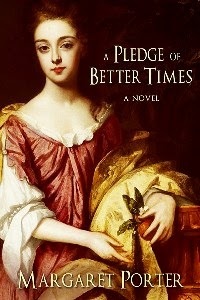 Its setting is comparatively rare for historical fiction: the time between the end of Charles II’s reign and George I’s ascension, three decades and four monarchs later. The events within its pages will make readers wonder why that is, for they're historically significant: Monmouth’s rebellion, the Siege of Belgrade, and the Glorious Revolution that saw the Catholic James II ousted and his Protestant daughter and son-in-law, Mary and William, invited to rule.
Its setting is comparatively rare for historical fiction: the time between the end of Charles II’s reign and George I’s ascension, three decades and four monarchs later. The events within its pages will make readers wonder why that is, for they're historically significant: Monmouth’s rebellion, the Siege of Belgrade, and the Glorious Revolution that saw the Catholic James II ousted and his Protestant daughter and son-in-law, Mary and William, invited to rule.
Using the strength and intelligence they were born with, the novel’s characters weather the shifting political climate over time. Lady Diana de Vere and the man she weds, Charles Beauclerk, Duke of St. Albans, are both prominent at court. Born of parents who were hardly faithful to one another, Diana guards her virtue, and her loyalty endears her to the future Queen Mary. Diana’s “frankness and acuity of mind” is of great benefit throughout her life.
Meanwhile, Charles paves his own path, never able to forget that of all the illegitimate sons of Charles II, his mother, former orange seller and actress Nell Gwyn, was of low birth: “Royal blood and military heroics could not eradicate the indelible stain of bastardy or the stench of the stage.”
Diana and Charles come to love one another deeply, but their differing views on married life (he becomes an army officer, detesting the courtier’s life she was born to) creates occasional disharmony, as does a hidden deception about their engagement. Two additional viewpoints add further texture: that of Diana’s father, the Earl of Oxford, who makes plain his dislike of James II’s tyranny and religious intolerance; and Mary herself, a gentle, intelligent woman and devoted wife crushed by her husband’s infidelity. Hers is a clearly admiring portrait.
Fans of royal fiction of the juicier sort may find the approach sedate at first, but it’s actually refreshing in its lack of gaudiness. The historical background is well-defined and the characters genuine, and the author’s love for the finer details of upper-class life in the Stuart era, such as painting, architecture, and gardening, shines through. At these and other moments, reading the novel itself gives the feel of stepping into an English garden, one filled with light, plentiful color, and cultured elegance.
A Pledge of Better Times was published by Gallica Press in April in ebook and paperback ($5.99/$14.95, 400pp). Thanks to the author for providing me with a copy for the virtual book tour. See Historical Fiction Virtual Book Tours for additional stops.
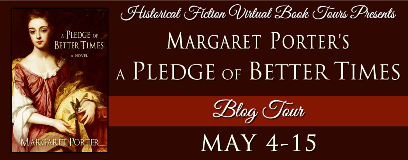
 Its setting is comparatively rare for historical fiction: the time between the end of Charles II’s reign and George I’s ascension, three decades and four monarchs later. The events within its pages will make readers wonder why that is, for they're historically significant: Monmouth’s rebellion, the Siege of Belgrade, and the Glorious Revolution that saw the Catholic James II ousted and his Protestant daughter and son-in-law, Mary and William, invited to rule.
Its setting is comparatively rare for historical fiction: the time between the end of Charles II’s reign and George I’s ascension, three decades and four monarchs later. The events within its pages will make readers wonder why that is, for they're historically significant: Monmouth’s rebellion, the Siege of Belgrade, and the Glorious Revolution that saw the Catholic James II ousted and his Protestant daughter and son-in-law, Mary and William, invited to rule.Using the strength and intelligence they were born with, the novel’s characters weather the shifting political climate over time. Lady Diana de Vere and the man she weds, Charles Beauclerk, Duke of St. Albans, are both prominent at court. Born of parents who were hardly faithful to one another, Diana guards her virtue, and her loyalty endears her to the future Queen Mary. Diana’s “frankness and acuity of mind” is of great benefit throughout her life.
Meanwhile, Charles paves his own path, never able to forget that of all the illegitimate sons of Charles II, his mother, former orange seller and actress Nell Gwyn, was of low birth: “Royal blood and military heroics could not eradicate the indelible stain of bastardy or the stench of the stage.”
Diana and Charles come to love one another deeply, but their differing views on married life (he becomes an army officer, detesting the courtier’s life she was born to) creates occasional disharmony, as does a hidden deception about their engagement. Two additional viewpoints add further texture: that of Diana’s father, the Earl of Oxford, who makes plain his dislike of James II’s tyranny and religious intolerance; and Mary herself, a gentle, intelligent woman and devoted wife crushed by her husband’s infidelity. Hers is a clearly admiring portrait.
Fans of royal fiction of the juicier sort may find the approach sedate at first, but it’s actually refreshing in its lack of gaudiness. The historical background is well-defined and the characters genuine, and the author’s love for the finer details of upper-class life in the Stuart era, such as painting, architecture, and gardening, shines through. At these and other moments, reading the novel itself gives the feel of stepping into an English garden, one filled with light, plentiful color, and cultured elegance.
A Pledge of Better Times was published by Gallica Press in April in ebook and paperback ($5.99/$14.95, 400pp). Thanks to the author for providing me with a copy for the virtual book tour. See Historical Fiction Virtual Book Tours for additional stops.

Published on May 11, 2015 06:30
May 8, 2015
Historical fiction picks at BEA 2015
As in previous years, I’m compiling a guide to the historical novels being promoted at the upcoming BookExpo America (BEA) show, to be held at the Javits Center in New York on May 27-29. The following list is based on BEA’s own list of traditional and in-booth autographing,
Publishers Weekly
’s “galleys to grab” list, and announcements from publishers. I've added blurbs, booth numbers, etc., to make the list more user-friendly. Good news: the HF picks are plentiful this year!
For authors with historical novels at BEA who aren't yet included, or to provide corrections, please leave a note in the comments or drop me an email. As always, I recommend cross-checking these dates/times with the BEA site or your program book beforehand to avoid possible disappointment.
This page will be updated as more information is made available, so check back later for new listings. I’ve tried not to cross-list titles, so if an author is doing a galley signing, it will be listed in the 2nd section below, under Author Signings.
~Galleys to Grab~
Europa Editions (booth 3124):
Chantel Acevedo, The Distant Marvels - political and family saga set in 20th-c Cuba. Author signing TBA.
Graywolf Press (booth 3064):
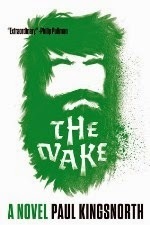 Paul Kingsnorth, The Wake - resistance against the Norman invaders in 11th-c England; written in a re-created version of Old English.
Paul Kingsnorth, The Wake - resistance against the Norman invaders in 11th-c England; written in a re-created version of Old English.
Hachette (booth 2918-9):
Oscar Hijuelos, Twain and Stanley Enter Paradise - lengthy posthumous novel about the friendship between Mark Twain and explorer Henry Morton Stanley.
HarperCollins (booth 2038):
Parnaz Foroutan, The Girl from the Garden - family saga of Persian Jews in early 20th-c Iran.
Adriana Trigiani, All the Stars in the Heavens - Loretta Young in ‘30s Hollywood. Excerpt galleys, signing TBA.
Houghton Mifflin Harcourt (booth 2541):
Clare Clark, We That Are Left - two sisters during WWI.
Macmillan (booth 3056):
 H. S. Cross, Wilberforce (galley giveaway 5/29, 9am) - adolescent longing in 1926 England.
H. S. Cross, Wilberforce (galley giveaway 5/29, 9am) - adolescent longing in 1926 England.
Elsa Hart, Jade Dragon Mountain (galley giveaway 5/27, 4:30pm) - an exiled Chinese librarian investigates a murder in the 18th century.
Benjamin Johncock, The Last Pilot (galley giveaway 5/28, 10:30am) - marriage and family life at the time of the Space Race.
Penguin Random House (booth 3319):
Alexandra Curry, The Courtesan - Qing dynasty courtesan Sai Jinhua in the late 19th century.
Ottessa Moshfegh, Eileen - crime in early ‘60s Boston area.
Natasha Solomons, The Song of Hartgrove Hall - love, grief, and treachery on an English estate, 1946 and 50 years later.
Simon & Schuster (booth 2620-1):
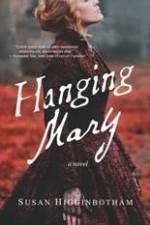 Lynn Cullen, Twain’s End - the personal life of the famous author.
Lynn Cullen, Twain’s End - the personal life of the famous author.
Sourcebooks (booth 3039):
Kelli Estes, The Girl Who Wrote in Silk (galley giveaway 5/28, 11am) - a modern woman, a Chinese girl from 100 years earlier, and a silk scarf that links them.
Susan Higginbotham, Hanging Mary (galley giveaway 5/28, 2pm) - Mary Surratt and a scheme to save the dying Confederacy.
~Author Signings~
Wednesday, May 27th (exhibit floor opens at 1pm)
2:30-3:30pm, booth 1039 (Algonquin):
B. A. Shapiro, The Muralist - dual-period novel surrounding an artist’s disappearance on the eve of WWII.
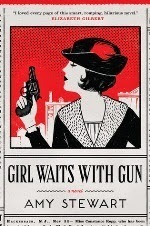 2:30-3:30pm, booth 2541 (HMH):
2:30-3:30pm, booth 2541 (HMH):
Amy Stewart, Girl Waits with Gun - one of America’s first female deputy sheriffs, set in 1914.
Thursday, May 28th
10:30am, booth 3039 (Sourcebooks):
Charles Belfoure, House of Thieves - thriller set in Gilded Age NYC.
10:30-11am, booth 1921 (Norton):
Matthew Guinn, The Scribe - serial murderer in 1881 Atlanta.
10:45am, booth 2657 (Mystery Writers of America):
James R. Benn, The White Ghost - historical mystery, JFK and Billy Boyle in the South Pacific.
11am-noon, table 12:
Emily Holleman, Cleopatra’s Shadows - Arsinoe, Cleopatra’s little-known younger sister.
Noon, booth 3240 (Soho Press):
James R. Benn, The White Ghost - see above at 10:45am.
1:30-2:30pm, booth 3319 (Penguin Random House):
Geraldine Brooks, The Secret Chord - the story of King David.
3-4pm, booth 3019 (Hachette):
Jami Attenberg, Saint Mazie - Mazie Phillips and her life in Jazz Age NYC.
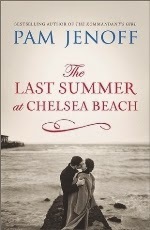 3:30-4:30pm, booth 3319 (Penguin Random House):
3:30-4:30pm, booth 3319 (Penguin Random House):
Rebecca Makkai, The Hundred-Year House - quirky “generational saga in reverse.”
3:30-4:30pm, booth 2908 (Harlequin):
Pam Jenoff, The Last Summer at Chelsea Beach - a young Italian woman’s journey and choices during the WWII years.
Friday, May 29th
10-11am, booth 2620-21 (Simon & Schuster):
Alice Hoffman, The Marriage of Opposites - impressionist painter Camille Pissarro’s Jewish mother, Rachel, set on St. Thomas in the 1800s.
10:45-11:45am, booth 3156 (Bloomsbury):
William Boyd, Sweet Caress - life of a modern woman in England, from WWI through her time as a war photographer in WWII France.
 11:30am-12:30pm, booth 3319 (Penguin Random House):
11:30am-12:30pm, booth 3319 (Penguin Random House):
Annie Barrows, The Truth According to Us - family secrets are discovered while a young debutante works for the Federal Writers Project in '30s West Virginia.
12-12:30pm, table 15:
Kim van Alkemade, Orphan #8 - a girl is subjected to medical experiments in 1919 NYC; her choice between revenge and mercy years later.
2pm-3pm, booth 3319 (Penguin Random House):
Paula McLain, Circling the Sun - the life of aviator and memoirist Beryl Markham.
3:30-4:30pm, booth 3319 (Penguin Random House):
Sara Donati, The Gilded Hour - epic of two women doctors in Gilded Age NYC.
For authors with historical novels at BEA who aren't yet included, or to provide corrections, please leave a note in the comments or drop me an email. As always, I recommend cross-checking these dates/times with the BEA site or your program book beforehand to avoid possible disappointment.
This page will be updated as more information is made available, so check back later for new listings. I’ve tried not to cross-list titles, so if an author is doing a galley signing, it will be listed in the 2nd section below, under Author Signings.
~Galleys to Grab~
Europa Editions (booth 3124):
Chantel Acevedo, The Distant Marvels - political and family saga set in 20th-c Cuba. Author signing TBA.
Graywolf Press (booth 3064):
 Paul Kingsnorth, The Wake - resistance against the Norman invaders in 11th-c England; written in a re-created version of Old English.
Paul Kingsnorth, The Wake - resistance against the Norman invaders in 11th-c England; written in a re-created version of Old English. Hachette (booth 2918-9):
Oscar Hijuelos, Twain and Stanley Enter Paradise - lengthy posthumous novel about the friendship between Mark Twain and explorer Henry Morton Stanley.
HarperCollins (booth 2038):
Parnaz Foroutan, The Girl from the Garden - family saga of Persian Jews in early 20th-c Iran.
Adriana Trigiani, All the Stars in the Heavens - Loretta Young in ‘30s Hollywood. Excerpt galleys, signing TBA.
Houghton Mifflin Harcourt (booth 2541):
Clare Clark, We That Are Left - two sisters during WWI.
Macmillan (booth 3056):
 H. S. Cross, Wilberforce (galley giveaway 5/29, 9am) - adolescent longing in 1926 England.
H. S. Cross, Wilberforce (galley giveaway 5/29, 9am) - adolescent longing in 1926 England.Elsa Hart, Jade Dragon Mountain (galley giveaway 5/27, 4:30pm) - an exiled Chinese librarian investigates a murder in the 18th century.
Benjamin Johncock, The Last Pilot (galley giveaway 5/28, 10:30am) - marriage and family life at the time of the Space Race.
Penguin Random House (booth 3319):
Alexandra Curry, The Courtesan - Qing dynasty courtesan Sai Jinhua in the late 19th century.
Ottessa Moshfegh, Eileen - crime in early ‘60s Boston area.
Natasha Solomons, The Song of Hartgrove Hall - love, grief, and treachery on an English estate, 1946 and 50 years later.
Simon & Schuster (booth 2620-1):
 Lynn Cullen, Twain’s End - the personal life of the famous author.
Lynn Cullen, Twain’s End - the personal life of the famous author. Sourcebooks (booth 3039):
Kelli Estes, The Girl Who Wrote in Silk (galley giveaway 5/28, 11am) - a modern woman, a Chinese girl from 100 years earlier, and a silk scarf that links them.
Susan Higginbotham, Hanging Mary (galley giveaway 5/28, 2pm) - Mary Surratt and a scheme to save the dying Confederacy.
~Author Signings~
Wednesday, May 27th (exhibit floor opens at 1pm)
2:30-3:30pm, booth 1039 (Algonquin):
B. A. Shapiro, The Muralist - dual-period novel surrounding an artist’s disappearance on the eve of WWII.
 2:30-3:30pm, booth 2541 (HMH):
2:30-3:30pm, booth 2541 (HMH): Amy Stewart, Girl Waits with Gun - one of America’s first female deputy sheriffs, set in 1914.
Thursday, May 28th
10:30am, booth 3039 (Sourcebooks):
Charles Belfoure, House of Thieves - thriller set in Gilded Age NYC.
10:30-11am, booth 1921 (Norton):
Matthew Guinn, The Scribe - serial murderer in 1881 Atlanta.
10:45am, booth 2657 (Mystery Writers of America):
James R. Benn, The White Ghost - historical mystery, JFK and Billy Boyle in the South Pacific.
11am-noon, table 12:
Emily Holleman, Cleopatra’s Shadows - Arsinoe, Cleopatra’s little-known younger sister.
Noon, booth 3240 (Soho Press):
James R. Benn, The White Ghost - see above at 10:45am.
1:30-2:30pm, booth 3319 (Penguin Random House):
Geraldine Brooks, The Secret Chord - the story of King David.
3-4pm, booth 3019 (Hachette):
Jami Attenberg, Saint Mazie - Mazie Phillips and her life in Jazz Age NYC.
 3:30-4:30pm, booth 3319 (Penguin Random House):
3:30-4:30pm, booth 3319 (Penguin Random House): Rebecca Makkai, The Hundred-Year House - quirky “generational saga in reverse.”
3:30-4:30pm, booth 2908 (Harlequin):
Pam Jenoff, The Last Summer at Chelsea Beach - a young Italian woman’s journey and choices during the WWII years.
Friday, May 29th
10-11am, booth 2620-21 (Simon & Schuster):
Alice Hoffman, The Marriage of Opposites - impressionist painter Camille Pissarro’s Jewish mother, Rachel, set on St. Thomas in the 1800s.
10:45-11:45am, booth 3156 (Bloomsbury):
William Boyd, Sweet Caress - life of a modern woman in England, from WWI through her time as a war photographer in WWII France.
 11:30am-12:30pm, booth 3319 (Penguin Random House):
11:30am-12:30pm, booth 3319 (Penguin Random House): Annie Barrows, The Truth According to Us - family secrets are discovered while a young debutante works for the Federal Writers Project in '30s West Virginia.
12-12:30pm, table 15:
Kim van Alkemade, Orphan #8 - a girl is subjected to medical experiments in 1919 NYC; her choice between revenge and mercy years later.
2pm-3pm, booth 3319 (Penguin Random House):
Paula McLain, Circling the Sun - the life of aviator and memoirist Beryl Markham.
3:30-4:30pm, booth 3319 (Penguin Random House):
Sara Donati, The Gilded Hour - epic of two women doctors in Gilded Age NYC.
Published on May 08, 2015 13:30
May 5, 2015
When tolerance fails, can hearts prevail? An essay by Pamela Schoenewaldt
Novelist Pamela Schoenewaldt is here today with a post about her latest novel's historical backdrop, and the subject is very relevant for today as well.
~
When tolerance fails, can hearts prevail? By Pamela Schoenewaldt
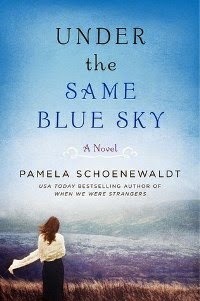 My research for Under the Same Blue Sky opened for me a fascinating look at my own German-American heritage, our national immigration debate, and a sobering reminder of how thin the veil of tolerance can be. A few facts. German-Americans are, even today, our largest self-reported minority. Between 1820 and World War I, six million Germans came to America, entering every profession and social strata, profoundly shaping our culture. By 1900, cities like Cleveland, Milwaukee, Cincinnati, and Hoboken were more than 40% German-American.
My research for Under the Same Blue Sky opened for me a fascinating look at my own German-American heritage, our national immigration debate, and a sobering reminder of how thin the veil of tolerance can be. A few facts. German-Americans are, even today, our largest self-reported minority. Between 1820 and World War I, six million Germans came to America, entering every profession and social strata, profoundly shaping our culture. By 1900, cities like Cleveland, Milwaukee, Cincinnati, and Hoboken were more than 40% German-American.
Many came to escape the draft (terms up to 25 years were common), poverty, and crushing debt. For my great-grandmother, Germany was a door that closed behind her. She learned English quickly and never looked back. Another ancestor, a cabinetmaker, found his place in a cozy German enclave of Manhattan called Harlem.
Other immigrants, like Johannes Renner of my novel, lived with the ache of loss, a deep well of memories and constant communication with friends and family back home. The stunning scale of horrors in World War I, both civilian and military, plunged him into what now would be diagnosed as “vicarious trauma,” a crippling manifestation of PTSD.
As America inched towards war, the predicament of German-Americans grew more complex and anguished. In fact, public suspicion and media railings against all “hyphenates” intensified. German-Americans, Hungarian, Italian, Polish, and Russian-Americans were suspect. Scrambling, German-Americans invented a pacifying phrase: "Germany our Mother, Columbia [America] Our Bride." Pretty words, said “real” Americans. But what happens when the mother and wife take up arms?
That day came, of course, on April 6, 1917. “Once lead this people into war,” President Woodrow Wilson warned, “and they'll forget there ever was such a thing as tolerance.” He was right. Overnight, as soldiers were rapidly enlisted, another army was being created of graphic artists, cartoonists, musicians, speechwriters, journalists, and teachers. Their job was to whip up hatred against the Kaiser. Naturally there was spill-over. Suddenly, long-time neighbors, friends, and colleagues were suspect. English itself must be purged of “Hun” words like hamburger, sauerkraut, frankfurters, dachshund, German Shepherd. Speaking German in public was forbidden. Books were burned. Freedom of speech, press, and assembly were choked off. German-Americans were forced to buy war bonds in great quantities to “prove” loyalty. Jobs were lost, homes destroyed, thousands imprisoned on suspect charges. Employees in some factories were forced to crawl across the floor and kiss the American flag. There were lynchings.
So quickly all this happened. That was the stunner for me. Communities shredded. Tolerance forgotten. This has happened over and over in history, and often, of course, on a hugely larger scale. Yet within the madness, there were those who struggled for understanding, for separating politics from people, weaving hearts together despite differences and the deep wounds of war. That’s what Under the Same Blue Sky is about.
~
Pamela Schonewaldt's Under the Same Blue Sky is published today in trade paperback by William Morrow (318pp, $14.99/Can$18.50).
 credit: Kelly NorrellPamela’s first novel, When We Were Strangers (HarperCollins, 2011), was a USA Today Bestseller, a major book club pick, a Barnes & Noble Great Discovery, short-listed for the Langum Prize in American Historical Fiction, and has been translated into Polish, Dutch, and Russian. Swimming in the Moon (HarperCollins, 2013) was cited by the Pittsburgh Examiner as a “a must read for anyone who enjoys beautiful, richly drawn characters, and a historical setting so realistic that one would believe they had been transported to another time. A glorious, unforgettable novel, A+.” It was a runner-up for the Langum Prize and connects powerfully with those who struggle with the impacts of mental illness in their families.
credit: Kelly NorrellPamela’s first novel, When We Were Strangers (HarperCollins, 2011), was a USA Today Bestseller, a major book club pick, a Barnes & Noble Great Discovery, short-listed for the Langum Prize in American Historical Fiction, and has been translated into Polish, Dutch, and Russian. Swimming in the Moon (HarperCollins, 2013) was cited by the Pittsburgh Examiner as a “a must read for anyone who enjoys beautiful, richly drawn characters, and a historical setting so realistic that one would believe they had been transported to another time. A glorious, unforgettable novel, A+.” It was a runner-up for the Langum Prize and connects powerfully with those who struggle with the impacts of mental illness in their families.
Pamela lived for ten years in a small town outside Naples, Italy. Her short stories have appeared in literary magazines in England, France, Italy and the United States. Her play, “Espresso con mia madre” (Espresso with my mother) was performed at Teatro Cilea in Naples. She taught writing for the University of Maryland, European Division and the University of Tennessee. Her interactive writing workshops inspire writers of all genre and stages. She now lives in Knoxville, Tennessee with her husband, Maurizio Conti, a medical physicist, and their dog Jesse, a philosopher.
~
When tolerance fails, can hearts prevail? By Pamela Schoenewaldt
 My research for Under the Same Blue Sky opened for me a fascinating look at my own German-American heritage, our national immigration debate, and a sobering reminder of how thin the veil of tolerance can be. A few facts. German-Americans are, even today, our largest self-reported minority. Between 1820 and World War I, six million Germans came to America, entering every profession and social strata, profoundly shaping our culture. By 1900, cities like Cleveland, Milwaukee, Cincinnati, and Hoboken were more than 40% German-American.
My research for Under the Same Blue Sky opened for me a fascinating look at my own German-American heritage, our national immigration debate, and a sobering reminder of how thin the veil of tolerance can be. A few facts. German-Americans are, even today, our largest self-reported minority. Between 1820 and World War I, six million Germans came to America, entering every profession and social strata, profoundly shaping our culture. By 1900, cities like Cleveland, Milwaukee, Cincinnati, and Hoboken were more than 40% German-American. Many came to escape the draft (terms up to 25 years were common), poverty, and crushing debt. For my great-grandmother, Germany was a door that closed behind her. She learned English quickly and never looked back. Another ancestor, a cabinetmaker, found his place in a cozy German enclave of Manhattan called Harlem.
Other immigrants, like Johannes Renner of my novel, lived with the ache of loss, a deep well of memories and constant communication with friends and family back home. The stunning scale of horrors in World War I, both civilian and military, plunged him into what now would be diagnosed as “vicarious trauma,” a crippling manifestation of PTSD.
As America inched towards war, the predicament of German-Americans grew more complex and anguished. In fact, public suspicion and media railings against all “hyphenates” intensified. German-Americans, Hungarian, Italian, Polish, and Russian-Americans were suspect. Scrambling, German-Americans invented a pacifying phrase: "Germany our Mother, Columbia [America] Our Bride." Pretty words, said “real” Americans. But what happens when the mother and wife take up arms?
That day came, of course, on April 6, 1917. “Once lead this people into war,” President Woodrow Wilson warned, “and they'll forget there ever was such a thing as tolerance.” He was right. Overnight, as soldiers were rapidly enlisted, another army was being created of graphic artists, cartoonists, musicians, speechwriters, journalists, and teachers. Their job was to whip up hatred against the Kaiser. Naturally there was spill-over. Suddenly, long-time neighbors, friends, and colleagues were suspect. English itself must be purged of “Hun” words like hamburger, sauerkraut, frankfurters, dachshund, German Shepherd. Speaking German in public was forbidden. Books were burned. Freedom of speech, press, and assembly were choked off. German-Americans were forced to buy war bonds in great quantities to “prove” loyalty. Jobs were lost, homes destroyed, thousands imprisoned on suspect charges. Employees in some factories were forced to crawl across the floor and kiss the American flag. There were lynchings.
So quickly all this happened. That was the stunner for me. Communities shredded. Tolerance forgotten. This has happened over and over in history, and often, of course, on a hugely larger scale. Yet within the madness, there were those who struggled for understanding, for separating politics from people, weaving hearts together despite differences and the deep wounds of war. That’s what Under the Same Blue Sky is about.
~
Pamela Schonewaldt's Under the Same Blue Sky is published today in trade paperback by William Morrow (318pp, $14.99/Can$18.50).
 credit: Kelly NorrellPamela’s first novel, When We Were Strangers (HarperCollins, 2011), was a USA Today Bestseller, a major book club pick, a Barnes & Noble Great Discovery, short-listed for the Langum Prize in American Historical Fiction, and has been translated into Polish, Dutch, and Russian. Swimming in the Moon (HarperCollins, 2013) was cited by the Pittsburgh Examiner as a “a must read for anyone who enjoys beautiful, richly drawn characters, and a historical setting so realistic that one would believe they had been transported to another time. A glorious, unforgettable novel, A+.” It was a runner-up for the Langum Prize and connects powerfully with those who struggle with the impacts of mental illness in their families.
credit: Kelly NorrellPamela’s first novel, When We Were Strangers (HarperCollins, 2011), was a USA Today Bestseller, a major book club pick, a Barnes & Noble Great Discovery, short-listed for the Langum Prize in American Historical Fiction, and has been translated into Polish, Dutch, and Russian. Swimming in the Moon (HarperCollins, 2013) was cited by the Pittsburgh Examiner as a “a must read for anyone who enjoys beautiful, richly drawn characters, and a historical setting so realistic that one would believe they had been transported to another time. A glorious, unforgettable novel, A+.” It was a runner-up for the Langum Prize and connects powerfully with those who struggle with the impacts of mental illness in their families.Pamela lived for ten years in a small town outside Naples, Italy. Her short stories have appeared in literary magazines in England, France, Italy and the United States. Her play, “Espresso con mia madre” (Espresso with my mother) was performed at Teatro Cilea in Naples. She taught writing for the University of Maryland, European Division and the University of Tennessee. Her interactive writing workshops inspire writers of all genre and stages. She now lives in Knoxville, Tennessee with her husband, Maurizio Conti, a medical physicist, and their dog Jesse, a philosopher.
Published on May 05, 2015 05:00
April 30, 2015
A look at The Promise by Ann Weisgarber, set on Galveston Island in 1900
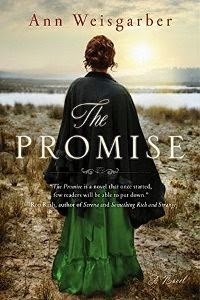 Ann Weisgarber excels at depicting the inner lives of people living through difficult historical times. She writes with a graceful simplicity that lays bare the natural beauty of the landscape and her characters' turbulent emotions. I found The Promise to be an even more engrossing read than her first novel, The Personal History of Rachel DuPree.
Ann Weisgarber excels at depicting the inner lives of people living through difficult historical times. She writes with a graceful simplicity that lays bare the natural beauty of the landscape and her characters' turbulent emotions. I found The Promise to be an even more engrossing read than her first novel, The Personal History of Rachel DuPree.In Dayton, Ohio, in 1900, 29-year-old Catherine Wainwright re-establishes a correspondence with an old friend, Oscar Williams, after her affair with her cousin's husband comes to light and brings shame upon her and her family. Oscar had used to deliver coal as a boy, but now he's a prosperous dairy farmer on Galveston Island down in Texas, a recent widower with a 5-year-old son, Andre.
Catherine, a talented pianist from a wealthy family, had never considered him as a suitor before, but now, she relates, "he was the only person whose letter was not cold or indifferent." When he offers marriage, which she both hoped for and was resigned to, she boards a southbound train in desperation, leaving her creditors behind.
The Promise smoothly alternates between the perspectives of Catherine, forced to adjust to more rustic circumstances and to marriage and a stepchild, and Nan Ogden, the younger woman who works as Oscar's housekeeper, having promised his late wife, her friend Bernadette, to take care of Andre. Nan secretly loves Oscar and is devastated he chose someone so different from her as his bride.
Through the women's narratives, the novel movingly depicts the loneliness of an outsider. Both are vulnerable in different ways. Not knowing how to cook, and unused to her new home's isolation and steamy climate, Catherine must depend on Nan to take care of her household. And Nan, despite her strong-willed nature, must stand by and say nothing as Catherine grows close to both Oscar and Andre. Both their voices feel authentic, Catherine's formality and perfect diction contrasting with Nan's easy knowledge of island life and her south Texas drawl.
A third woman plays a major role in the story, too. Bernadette only appears in flashbacks, but her presence comes alive on the page nonetheless. Ann Weisgarber creates such a compelling back story for her, a Louisiana Cajun who overcame a shameful background and enjoyed a loving marriage only to die young, that it makes you realize both how unfair and how precious life is.
The Williams home is built on a ridge, and on 8-foot stilts besides, but it, too, like everything else on Galveston Island, becomes vulnerable as a mammoth storm appears off the coast. The Galveston Hurricane of 1900 was America's most devastating natural disaster, with terrible loss of life and property. While I turned the pages rapidly, anxious to see how things turned out, I had to put the book down several times, fearful that characters I'd come to care about might be hurt.
Rich in description and emotion, The Promise is highly recommended for admirers of character-centered historical novels. It was a deserving finalist for the 2014 Walter Scott Prize for Historical Fiction.
The Promise is published in trade paperback by Skyhorse on May 5th, with the new cover art above (336pp, $14.99). I read it from a personal copy, having purchased the UK hardcover last year.
Published on April 30, 2015 11:00
April 28, 2015
The WWI home front as seen in Elizabeth Jeffrey's Meadowlands
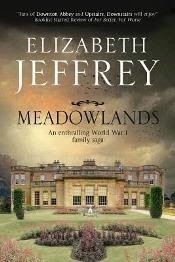 You might call this one "Downton Abbey lite."
You might call this one "Downton Abbey lite."The premise of Meadowlands will be familiar to followers of the WWI saga trend. The aristocratic Bartrams see their world upended as their country plunges into war. Life as they know it won't ever be the same again. Etc.
Unlike their distant parents, Sir George Barsham MP and his wife, Lady Adelaide, the four Bartram children face up to reality and pitch in to do their part. James goes into the army; Ned's a conscientious objector but eventually volunteers as a non-combatant so as not to be labeled a coward; Millie drives ambulances in France with the Voluntary Aid Detachment; and Georgina "Gina," the most prominent character of the bunch, establishes a soup kitchen for local women. On the "downstairs" side, sort of, is Polly Catchpole, a young neighbor who works as a maid at Meadowlands. She grew up alongside James and has always loved him but knows any future for them is futile.
The novel is strongest in showing the plight of the women and children left impoverished and forgotten by the government while their families' breadwinners are fighting overseas. Gina serves as their guide through the endless red tape and uses her contacts to help them fight for the separation allowances owed them, but that doesn't always help.
The broad-brush characters slot easily into their assigned roles, and for readers who might miss the novel's themes, the dialogue gives regular reminders: "Yes, I fear all the old values are disappearing," for instance. Lady Adelaide, in particular, is a piece of work in her absolute cluelessness: "Must the conversation always be either the war or politics when you're at home?" she whines to her husband, who avoids her by staying in London. It almost comes as a relief to see even her children poking fun at her ridiculous behavior by the end.
It's a non-taxing portrayal of the WWI home front, though not especially original, and don't expect any local color. Meadowlands is a stand-in for a typical English estate, and it's unclear which county or even part of England it's in.
Meadowlands was published by Severn House this month (hb, $29.95, 224pp). Thanks to the publisher for the NetGalley download.
Published on April 28, 2015 16:30
April 26, 2015
Courage, controversy, and love in the Enlightenment: The Philosopher's Kiss
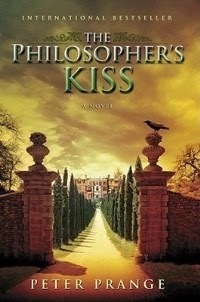 In our day, authors and editors of reference books aren't considered to be especially dangerous. Dedicated and scholarly, perhaps, but not overly controversial. In addition, the print editions of multi-volume reference sets also becoming a thing of the past. The Encyclopedia Britannica, for instance, ceased hard copy publication in 2012 in favor of the more versatile and popular e-version.
In our day, authors and editors of reference books aren't considered to be especially dangerous. Dedicated and scholarly, perhaps, but not overly controversial. In addition, the print editions of multi-volume reference sets also becoming a thing of the past. The Encyclopedia Britannica, for instance, ceased hard copy publication in 2012 in favor of the more versatile and popular e-version.In France in the mid-18th century, however, circumstances were far different. Denis Diderot and Jean le Rond d'Alembert, the principal editors of the noted Encyclopédie, risked life and liberty to produce the first work of its kind in the French language.
In their quest to provide comprehensive treatment of the arts, sciences, and trades via commissioned articles from notable contributors, their masterwork emphasized human thought and accomplishments over theology. The Church took offense, and government censors kept close watch on the project. The 28 volumes of the Encyclopédie appeared over the course of 21 years and were supported by the funding of an increasing number of eager subscribers. In the end, it stands as a tremendous accomplishment, and a brave testament to Enlightenment-era ideals.
The Philosopher's Kiss delves into the lives of the people involved in its conception and publication, from Diderot and his publisher, André le Breton, to the philosopher Rousseau, the statesman Malesherbes, and royal mistress Madame de Pompadour, who supported it and had her own ways of defending its purpose to the king, Louis XV.
Its main character, however, is Sophie Volland, a shadowy figure in French intellectual history who was Diderot's lover and longtime confidante. Over a hundred of his letters to her survive, but not the reverse. In the novel, she's a literate young woman, unusual for her day, who is torn between the religious obedience forced on her as a child, her pursuit of knowledge, and her need for love. She becomes involved with the Encyclopédie's development in a number of ways.
I find the English translation of the title (originally Die Philosophin in German, or "The Lady Philosopher") rather unfortunate because it emphasizes the romance aspects, which I found overblown, over the real meat and strength of the novel: the intellectual discourses among the free-thinkers of Paris, the cultural milieu, the religious controversies that resulted when long-held tenets of faith were challenged. C'est dommage.
Because little is known about Mlle Volland, Prange takes a number of liberties with her character for the story's sake, some of which can be considered inspired guesswork, others of which seem unlikely. An author's note at the end ("Fiction and Truth") sets forth details on the many actual historical events dramatized in the book. I've been reading up on the historical Sophie (whose birth name was apparently Louise-Henriette) ever since. I recommend the novel for its depiction of a transformative event, and also recommend that potential readers investigate the history on their own.
The Philosopher's Kiss was published in 2011 by Atria, and translated into English by Steven T. Murray. This was a personal copy I'd left sitting on my shelves for way too long. Prange is a bestselling author in Germany who wrote many other historicals, but this, unfortunately, is his only work in English translation.
Published on April 26, 2015 07:00
April 23, 2015
A recipe for deception: Martine Bailey's An Appetite for Violets
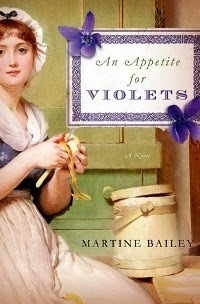 Biddy Leigh, the lead character of Martine Bailey's debut novel, works as the under-cook at Mawton Hall in Cheshire in the 1770s. Adorning each chapter opening are the recipes she consults and writes in a household book she carries on her adventures.
Biddy Leigh, the lead character of Martine Bailey's debut novel, works as the under-cook at Mawton Hall in Cheshire in the 1770s. Adorning each chapter opening are the recipes she consults and writes in a household book she carries on her adventures. Written by an award-winning amateur cook, An Appetite for Violets fits as “foodie fiction,” a mini-genre that compels reviewers to pull culinary metaphors out of their cupboards and serve them up for readers’ delectation. (See? It's almost too easy.) That said, while some books of this type can feel gimmicky, this is a full-fledged historical novel that presents late 18th-century England and Europe from a servant's viewpoint.
The roles of food as nourishment, entertainment, a reflection of social class, and a way to connect to women of the past are all gently spun into the story. It’s all topped off with a sweet romance and more than a touch of Gothic creepiness. The recipes themselves ("receipts," in period parlance) are the icing on the cake.
The plot takes the form of a Georgian-era road trip, and Biddy’s voice – good-natured, fresh, and full of colorful regionalisms – makes her an appealing guide. In one amusing example, revealing her family background, she says that her "old da... fancied himself a roaring dissenter, but all I ever saw him dissent from was a hard day’s work.” The action starts when her elderly master’s young second wife, Lady Carinna, shows up at Mawton alone and unannounced, then demands an escort to her uncle’s villa in Italy. “I reckon she brings only trouble here,” says Biddy, all too correctly.
Fashionable and fine-looking but with unorthodox habits, Lady Carinna’s a bit strange, but she likes Biddy’s cooking and Biddy herself – and orders her to come along and dish up good English fare along the way. Biddy forms a friendship with Mr Loveday, the footman, whose non-western background is highlighted. Smart and literate yet lonely, he’s a former warrior from Batavia who mentally escapes through dreams of his previous life. The servant’s lot is a lowly and demeaning one, that’s apparent, but from sophisticated Paris to the Alps of Savoy to the gloomy and aptly named Villa Ombrosa in Tuscany, ambitious Biddy keeps her good sense and finds new opportunities to up her culinary game.
Letters travel back and forth from others as their party heads south, which leave Mr Loveday and Biddy wondering about the true reasons behind their travels. The story remains absorbing throughout, and the suspense gradually increases as the story behind the ghastly scene in the prologue comes to light. This scrumptiously satisfying work will leave readers eagerly awaiting the author’s next fictional creation, foodie or otherwise.
An Appetite for Violets was published in January by St. Martin's Press ($26.99 US/Can, hb, 391pp). It was published in the UK by Hodder Paperbacks in January as well (£7.99). Thanks to the publisher for sending me an ARC at my request.
Published on April 23, 2015 05:00
April 21, 2015
The weight of history: Orhan's Inheritance by Aline Ohanesian
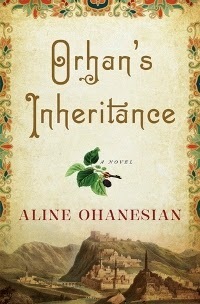 When Orhan Türkoğlu comes home to Kerod in Anatolia after the death of his grandfather, Kemal, the driver of his hired car praises him for returning. “So many young people leave their villages and never come back,” he says.
When Orhan Türkoğlu comes home to Kerod in Anatolia after the death of his grandfather, Kemal, the driver of his hired car praises him for returning. “So many young people leave their villages and never come back,” he says. The statement has a double meaning the speaker didn't intend but which the reader will come to understand. Back in 1915, countless young Armenians, along with what family members they had left, had been forced out of their villages in the Ottoman Empire and into the Syrian desert. Only vestiges of their historical presence remain today in their homeland.
Thus begins a novel that works as an entertaining story and a learning experience – for the reader and, in different ways, for its two protagonists. Orhan comes face to face with his country’s shameful, unacknowledged past after learning that his grandfather had left him his rug business, skipping over his irritated father, but willed their family’s ancestral house to an Armenian woman, Seda Melkonian, living in a California nursing home.
Aline Ohanesian has made several wise decisions in structuring her debut novel, which is set partly in 1990, partly a century ago. Rather than jumping back and forth frequently between the two eras and several viewpoints, which could have felt abrupt and dizzying, she gives all of her narratives sufficient time to build and take hold.
Also, from Orhan and Kemal to Orhan’s Auntie Fatma, whose tart and feisty attitude spices things up, to the elderly Seda, who feels weighted down by a personal history she can’t escape, her characters are as well-developed as her plots. It's an emotional page-turner of a book, and while it doesn’t shy away from the horrors the Armenians suffered at Turkish hands, it also doesn’t malign an entire people.
And finally, with her intimate focus on one family’s tragic losses, she conveys the enormity of the devastation wrought upon their ethnic group. The Melkonians’ story is both unique and universal.
Those who enjoy piecing together mysteries will find much to appreciate in Orhan’s Inheritance, since no single individual has all the information to resolve a historical puzzle. For prospective readers, the less said about the plot’s specifics here, the better.
Basing her moving work on her great-grandmother’s early life, Ohanesian shows how the past must be acknowledged, and ignorance abolished, in order to move forward. As the centennial of the Armenian Genocide is observed this month, with widespread commemorations and continued urgings for more official recognition, there should be no question that this work of historical fiction – and history itself – has incredible relevance for today.
Orhan's Inheritance was published this month by Algonquin Books of Chapel Hill (hb, $25.95, 352pp). Thanks to the publisher for the copy that showed up in my mailbox.
Published on April 21, 2015 07:00
April 18, 2015
The underside of Gilded Age New York: Leslie Parry's Church of Marvels
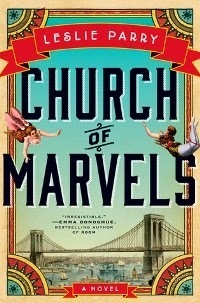 “Life is uncommon and strange; it is full of intricacies and odd, confounding turns.” This statement made by the opening narrator of Parry’s creative debut also describes its characters and story line, which bursts with extraordinary, Dickensian-style details of 1895 New York.
“Life is uncommon and strange; it is full of intricacies and odd, confounding turns.” This statement made by the opening narrator of Parry’s creative debut also describes its characters and story line, which bursts with extraordinary, Dickensian-style details of 1895 New York.Amid the city’s grimy waterfronts, opium dens, and other lowlife regions, four impoverished misfits pursue separate missions. The discovery of a newborn baby in the privies outside a tenement prompts Sylvan Threadgill to locate the child’s mother, while Odile Church leaves Coney Island to find her sister, Belle, her sideshow partner before fire killed their courageous mother and destroyed their circus. Lastly, young Alphie waits for her undertaker husband to rescue her from an asylum. Their stories twine together in ways that feel surprising when first encountered but were actually carefully planted from the start.
Emphasizing the plight of women, orphans, and society’s nonconforming outcasts, the setting is superbly showcased, with its medley of sights and smells both wretched and wondrous. Especially recommended for admirers of atmospheric nineteenth-century historicals like Emma Donoghue’s Frog Music (2014).
Church of Marvels will be published on May 5th by Ecco (hb, $26.99, 320pp) and in June by Two Roads in the UK (hb, £16.99). This review first appeared in Booklist's April 15th issue, which has a special focus on historical fiction.
I've mentioned here before that I'm not usually drawn to novels dealing with circuses, fairs, magicians, etc.. Growing up hearing grisly tales of the Hartford Circus Fire (1944) and with a fear of clowns had that effect on me. However, after reading and reviewing a few of these books and enjoying them very much, it may be time to revise my opinions. Or at least make exceptions!
Published on April 18, 2015 07:41



